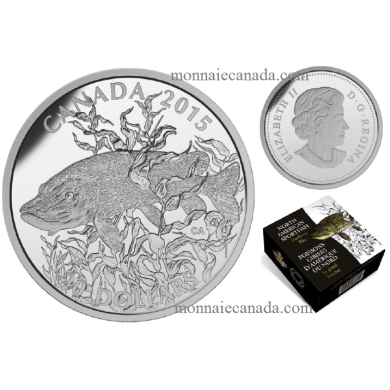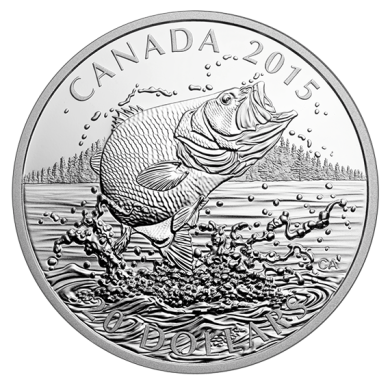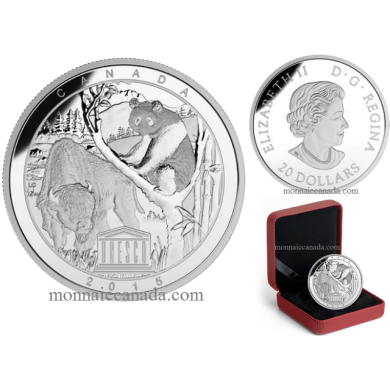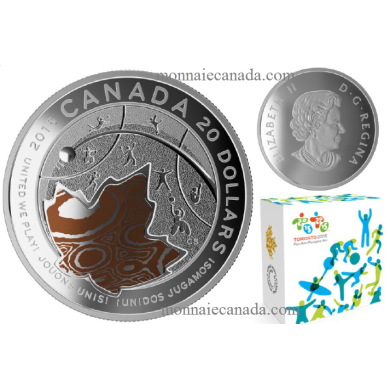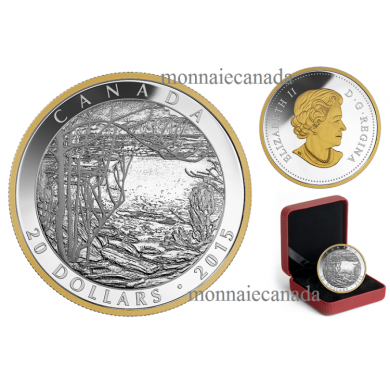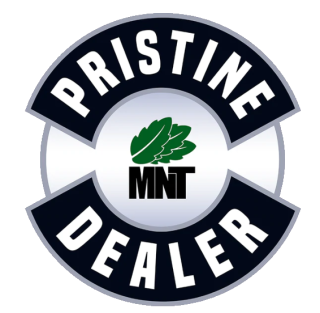Free shipping with purchases of $ 500 or more
2015 - $20 - 1 oz. Fine Silver Coin - The Canadian Home Front: Transcontinental Railroad
# B296
Sold out
$89.95
The Canadian Home Front: Transcontinental Railroad
"The most demanding part of my work in wartime was keeping vital materials moving... troop movements would have to take priority." - I've been Working on the Railroad: Memoirs of a Railwayman, 1911-1962, by W. J. Chafe. St. John's: Henry Cuff Pub., 1987, p. 82-83
The steel and timber arteries of a young nation, Canada's transcontinental railways played a vital role on the homefront during the First World War. As Canadians heeded the call of duty sent out on August 6, 1914, so too did the railways; trains from every corner of Canada transported 600 men at a time to the hastily-built training camp of Valcartier in Quebec. While these "troop trains" would continue throughout the war, Canada's three transcontinental railway systems would also be responsible for moving millions of cargo that maintained Canada's wartime economy not to mention the transportation of ammunition, natural resources, food and other supplies destined for shipping overseas to Canada's allies.
These railway systems played an important part in Canada's nation-building by opening up Canada's west to increased settlement, while linking cities, ports and industries across this expansive territory. Key to Confederation were the completion of Atlantic Canada's Intercolonial Railway in 1876 and Canada's first transcontinental railway, the Canadian Pacific Railway (CPR), in 1885.
Canada's competitive railways were launched into a state of steady expansion that was still underway when war broke out in 1914. As part of an agreement with eastern Canada's Grand Trunk Railway (GTR), the government built the National Transcontinental Railway (NTR) that ran from Winnipeg to Moncton through Northern Ontario; meanwhile, the GTR was eager to compete with CPR in the west and had expanded westward from Winnipeg through its subsidiary, the Grand Trunk Pacific (GTP), which reached Prince Rupert in 1914. The Canadian Northern Railway had also become a third option, having grown from a small, Manitoba-based line into a 16,093 kilometre-long transcontinental system.
From the early days of the war, fleets of steam locomotives such as the 4-6-2 "Pacific" and the older D 10-class 4-6-0 "Ten-Wheeler" pulled the troop trains filled with enlisted men, while others like the older 2-8-0 "Consolidation" and the Class S 2-8-2 "Mikado" locomotives kept the country's freight moving along. Women replaced the enlisted men in some of the railway manufacturers such as Montreal's Angus Workshops, and in several work positions in Canadian railways. Some of the railcar manufacturing industry was temporarily converted to produce ammunition. The railways also encouraged Canadians at home to donate to the Canadian Patriotic Fund to sustain the families of soldiers fighting in Europe or purchase Victory Bonds to financially support the war effort.
By 1915, Canada boasted three transcontinental systems: the Canadian Pacific Railway (CPR), which was the first of Canada's transcontinental railways and whose completion in 1885 fulfilled a promise made during Confederation; the Canadian Northern Railway, a 16,093-kilometre-long system that was completed in 1915; and a planned collaboration between the government-built National Transcontinental Railway that ran from Winnipeg east to Moncton, and the Grand Trunk Railway (GTR), which had extended its reach west to Prince Rupert by 1914 through its subsidiary, the Grand Trunk Pacific (GTP). During the war, this vast network of transportation not to mention the industry's machinery and skilled workers was placed at Canada's disposal throughout the war, giving priority to the movement of its troops, goods and labour force.
Specifications
No. 144429
Mintage 7500
Composition 99.99% pure silver
Finish proof
Weight (g) 31.39
Diameter (mm) 38
Edge serrated
Certificate serialized
Face value 20 dollars
Artist David A. Oram (reverse), Sir E.B. MacKennal (obverse)
The steel and timber arteries of a young nation, Canada's transcontinental railways played a vital role on the homefront during the First World War. As Canadians heeded the call of duty sent out on August 6, 1914, so too did the railways; trains from every corner of Canada transported 600 men at a time to the hastily-built training camp of Valcartier in Quebec. While these "troop trains" would continue throughout the war, Canada's three transcontinental railway systems would also be responsible for moving millions of cargo that maintained Canada's wartime economy not to mention the transportation of ammunition, natural resources, food and other supplies destined for shipping overseas to Canada's allies.
These railway systems played an important part in Canada's nation-building by opening up Canada's west to increased settlement, while linking cities, ports and industries across this expansive territory. Key to Confederation were the completion of Atlantic Canada's Intercolonial Railway in 1876 and Canada's first transcontinental railway, the Canadian Pacific Railway (CPR), in 1885.
Canada's competitive railways were launched into a state of steady expansion that was still underway when war broke out in 1914. As part of an agreement with eastern Canada's Grand Trunk Railway (GTR), the government built the National Transcontinental Railway (NTR) that ran from Winnipeg to Moncton through Northern Ontario; meanwhile, the GTR was eager to compete with CPR in the west and had expanded westward from Winnipeg through its subsidiary, the Grand Trunk Pacific (GTP), which reached Prince Rupert in 1914. The Canadian Northern Railway had also become a third option, having grown from a small, Manitoba-based line into a 16,093 kilometre-long transcontinental system.
From the early days of the war, fleets of steam locomotives such as the 4-6-2 "Pacific" and the older D 10-class 4-6-0 "Ten-Wheeler" pulled the troop trains filled with enlisted men, while others like the older 2-8-0 "Consolidation" and the Class S 2-8-2 "Mikado" locomotives kept the country's freight moving along. Women replaced the enlisted men in some of the railway manufacturers such as Montreal's Angus Workshops, and in several work positions in Canadian railways. Some of the railcar manufacturing industry was temporarily converted to produce ammunition. The railways also encouraged Canadians at home to donate to the Canadian Patriotic Fund to sustain the families of soldiers fighting in Europe or purchase Victory Bonds to financially support the war effort.
By 1915, Canada boasted three transcontinental systems: the Canadian Pacific Railway (CPR), which was the first of Canada's transcontinental railways and whose completion in 1885 fulfilled a promise made during Confederation; the Canadian Northern Railway, a 16,093-kilometre-long system that was completed in 1915; and a planned collaboration between the government-built National Transcontinental Railway that ran from Winnipeg east to Moncton, and the Grand Trunk Railway (GTR), which had extended its reach west to Prince Rupert by 1914 through its subsidiary, the Grand Trunk Pacific (GTP). During the war, this vast network of transportation not to mention the industry's machinery and skilled workers was placed at Canada's disposal throughout the war, giving priority to the movement of its troops, goods and labour force.
Specifications
No. 144429
Mintage 7500
Composition 99.99% pure silver
Finish proof
Weight (g) 31.39
Diameter (mm) 38
Edge serrated
Certificate serialized
Face value 20 dollars
Artist David A. Oram (reverse), Sir E.B. MacKennal (obverse)
You may also be interested in these products
Keep in touch!
Subscribe to receive email specials and new products.
Come see us !
OPENING HOURS
Tuesday to Saturday - 9h00am - 4h00pm
Sunday - Monday - Closed
Tuesday to Saturday - 9h00am - 4h00pm
Sunday - Monday - Closed
Buying:
Coins & paper money
We buy coins and paper money as well as broken or unwanted gold jewellery.
- What to do and what not to do.
- How To Prepare your collection to be evaluated.


